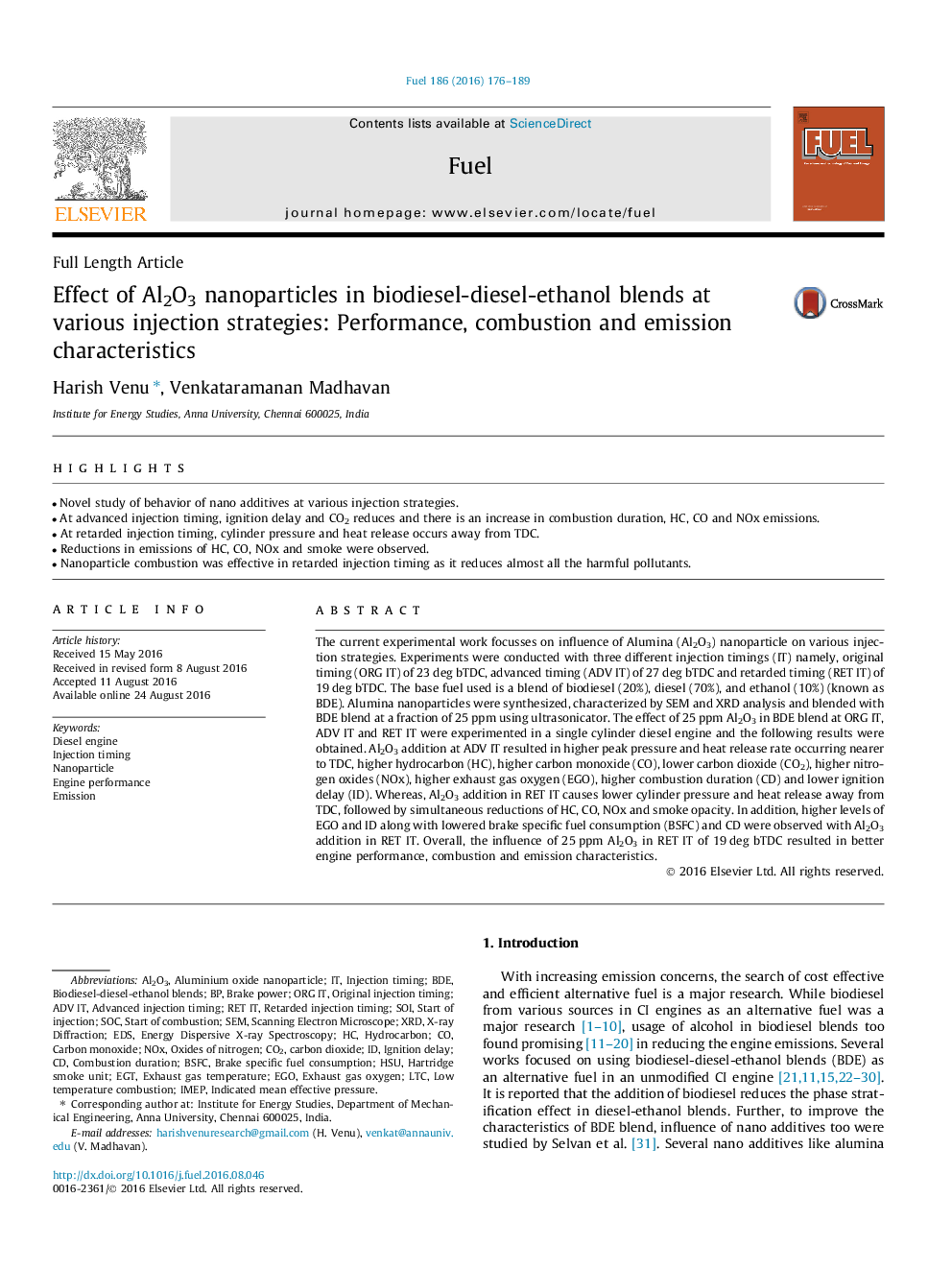| Article ID | Journal | Published Year | Pages | File Type |
|---|---|---|---|---|
| 6476033 | Fuel | 2016 | 14 Pages |
â¢Novel study of behavior of nano additives at various injection strategies.â¢At advanced injection timing, ignition delay and CO2 reduces and there is an increase in combustion duration, HC, CO and NOx emissions.â¢At retarded injection timing, cylinder pressure and heat release occurs away from TDC.â¢Reductions in emissions of HC, CO, NOx and smoke were observed.â¢Nanoparticle combustion was effective in retarded injection timing as it reduces almost all the harmful pollutants.
The current experimental work focusses on influence of Alumina (Al2O3) nanoparticle on various injection strategies. Experiments were conducted with three different injection timings (IT) namely, original timing (ORG IT) of 23Â deg bTDC, advanced timing (ADV IT) of 27Â deg bTDC and retarded timing (RET IT) of 19Â deg bTDC. The base fuel used is a blend of biodiesel (20%), diesel (70%), and ethanol (10%) (known as BDE). Alumina nanoparticles were synthesized, characterized by SEM and XRD analysis and blended with BDE blend at a fraction of 25Â ppm using ultrasonicator. The effect of 25Â ppm Al2O3 in BDE blend at ORG IT, ADV IT and RET IT were experimented in a single cylinder diesel engine and the following results were obtained. Al2O3 addition at ADV IT resulted in higher peak pressure and heat release rate occurring nearer to TDC, higher hydrocarbon (HC), higher carbon monoxide (CO), lower carbon dioxide (CO2), higher nitrogen oxides (NOx), higher exhaust gas oxygen (EGO), higher combustion duration (CD) and lower ignition delay (ID). Whereas, Al2O3 addition in RET IT causes lower cylinder pressure and heat release away from TDC, followed by simultaneous reductions of HC, CO, NOx and smoke opacity. In addition, higher levels of EGO and ID along with lowered brake specific fuel consumption (BSFC) and CD were observed with Al2O3 addition in RET IT. Overall, the influence of 25Â ppm Al2O3 in RET IT of 19Â deg bTDC resulted in better engine performance, combustion and emission characteristics.
